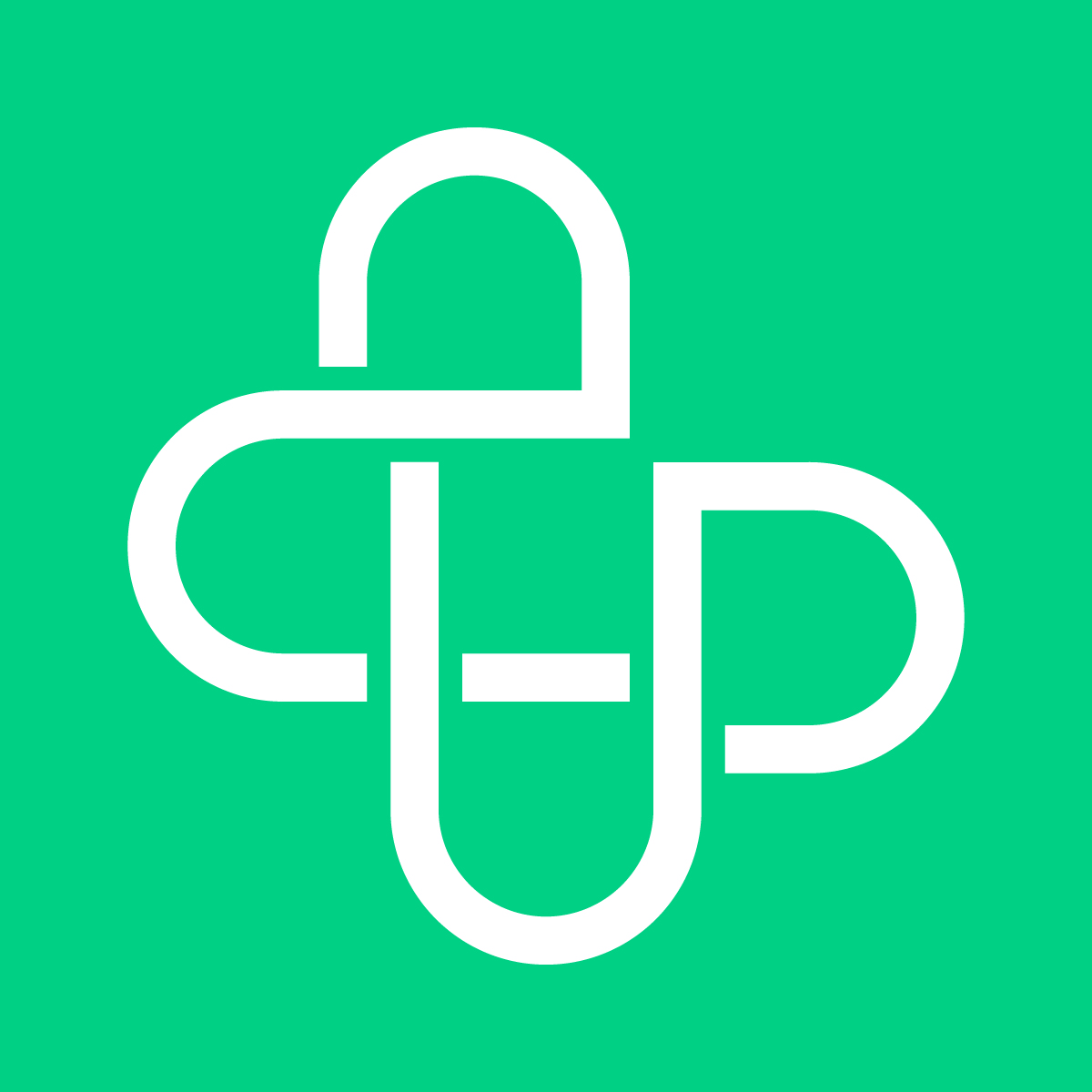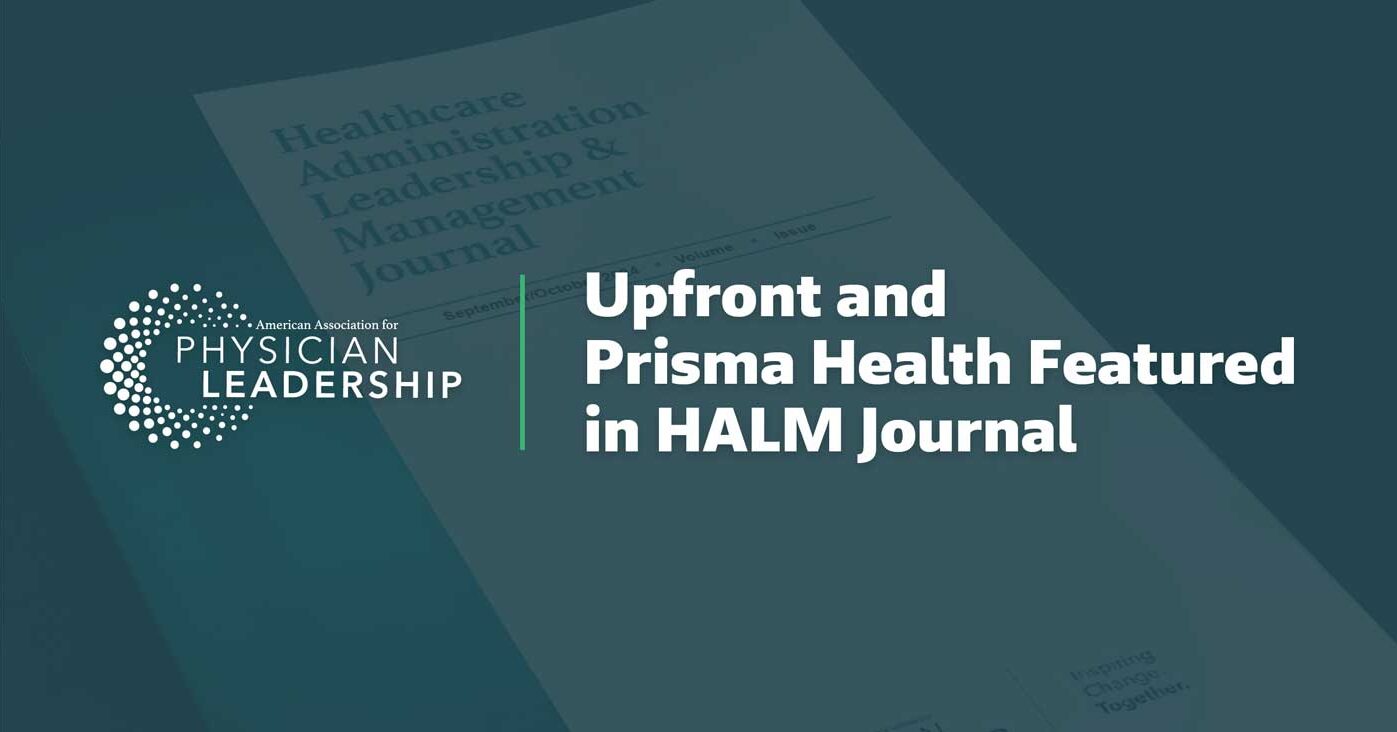Nearly three years into the pandemic, patient health and wellbeing is not faring as well as they should be. This comes as no surprise to healthcare leaders, but comparing Upfront market research from 2018 results to 2022 results paints a powerful picture at how health outcomes have diminished.
These are just some of the numbers among the general population when it comes to their overall health and their mental/emotional health.
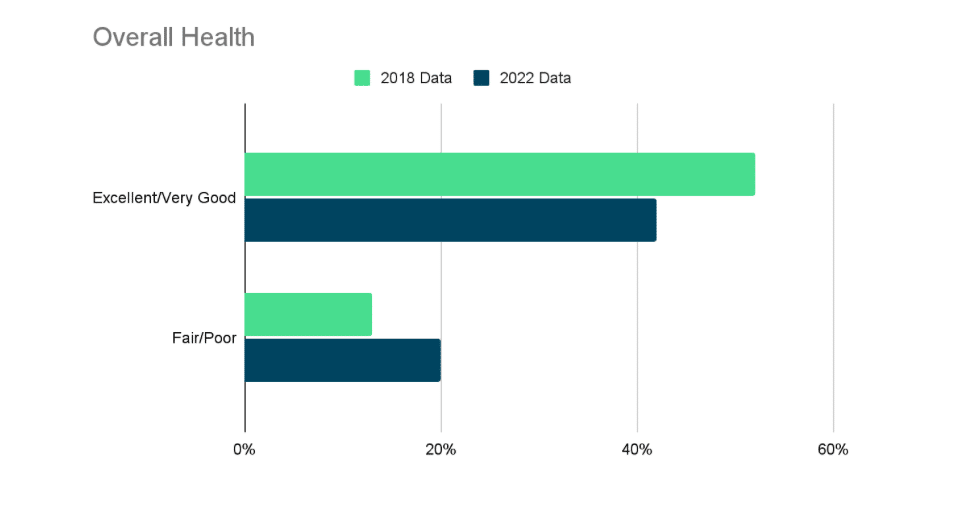
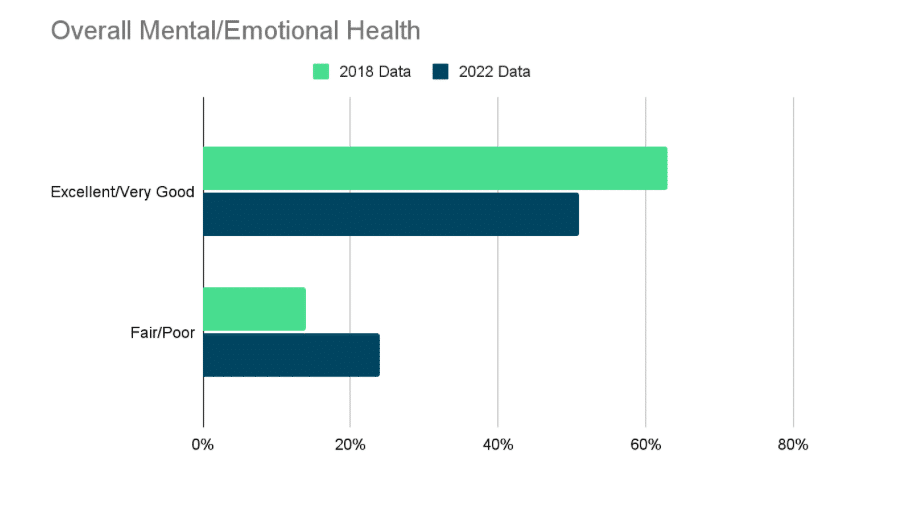
Despite all of the digital tools that are prevalent across the marketplace, they aren’t effective enough to address the gaps in care healthcare consumers are experiencing, because they are not sufficiently personalized in their approach to patient engagement. Without personalization, healthcare providers are not addressing individual patients’ attitudes, motivations and priorities.
The good news is that there are options to increase patient engagement that resonate with patients enough so that they are motivated to get the care they need. Among those options, one stands out: psychographic segmentation.
This consumer segmentation model involves looking at what internally motivates people to take action based on values, ideals and beliefs. When using the model for healthcare, providers can determine what it takes for patients to act on their healthcare, whether it’s scheduling an appointment, getting a vaccine or paying their copays, based on their specific segment within the model.
With 91.1% accuracy, Upfront can predict which of the five segments patients fall under and use that information, plus artificial intelligence, to tweak communications and interactions to make them more compelling. By using this model, providers can address gaps in care before they become an issue.
Here are a few examples of how psychographics can reduce care gaps.
Foresee Chronic Conditions
Psychographic segments can show statistically how much more likely a patient is going to develop or have a chronic condition in comparison to the other segments.
When comparing all the segments, Trustful Responders are statistically most likely to develop COPD and diabetes (type 1 or 2) and Willful Endurers are statically most likely to develop asthma and depression. But Balance Seekers are statistically most likely to not have any chronic conditions among all segments.
This knowledge is extremely helpful in determining what kind of chronic conditions physicians can look out for and take preventative steps to address them before they happen or worsen. This especially shows why preventative and annual visits, like cancer screenings, blood work and regular physicals, are so vital to addressing gaps in care, which we will address in the next section.
Increase Frequency of Visits
According to Upfront market research, 73% of healthcare consumers got a physical in the last 12 months, two percent less than prior to the pandemic in 2018. While this stat is interesting in itself, it gets more interesting when looking at the segment data.
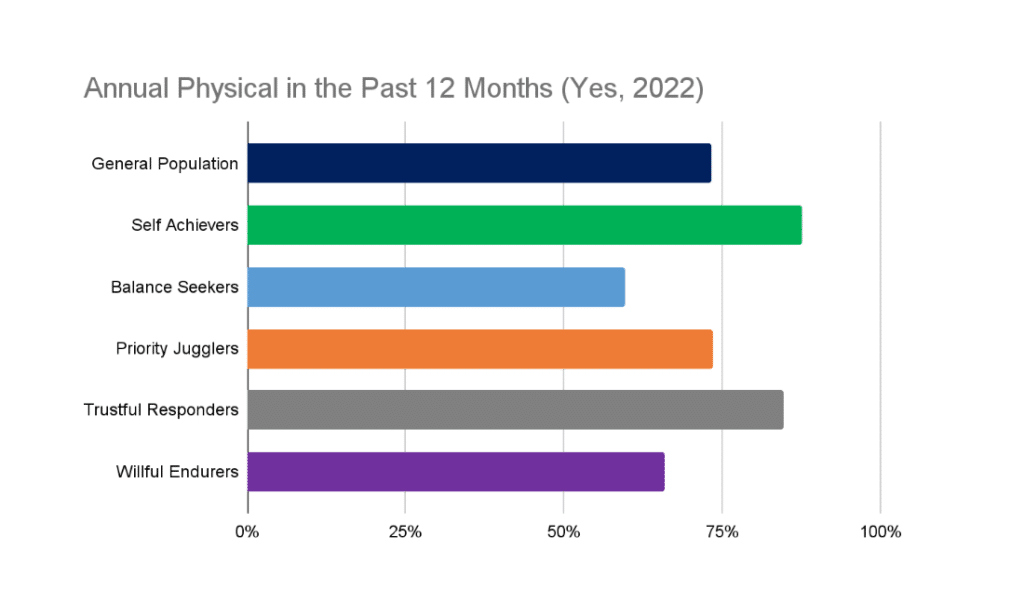
Of all the segments, Balance Seekers are statistically less likely than any other segment to get their annual physical in the past 12 months with roughly 4 in 10 opting out.
When it comes to frequency of primary care visits in the last year, the data paint a similar picture. Balance Seekers, Priority Jugglers and Willful Endurers are statistically less likely to visit their primary care physician at all.
Every patient deserves the same amount of care, even if their mind isn’t on their health and it slips off the radar. Knowing that these patients are susceptible to avoiding these visits, especially difficult screenings like colonoscopies, mammograms and skin cancer checks, providers can take action accordingly by fine tuning messaging making an extra effort to engage with these patients effectively.
Address Social Support Challenges
Patients face challenges in getting social support they need. In a national market research survey, Upfront asked about challenges to social support, including the following issues:
- Distance to supportive people
- Limited mobility/movement is difficult due to a physical condition
- I have a disability
- I have difficulty hearing
- I have issues with my voice/difficulty speaking
- Limited/no access to communication devices
- Costs/financial limitations
Of these challenges, the top four responses among the general population and all segments include distance to supportive people, limited mobility, having a disability and costs.
But of all the segments facing these challenges, one stands out. Willful Endurers are more likely to face nearly all of these challenges.
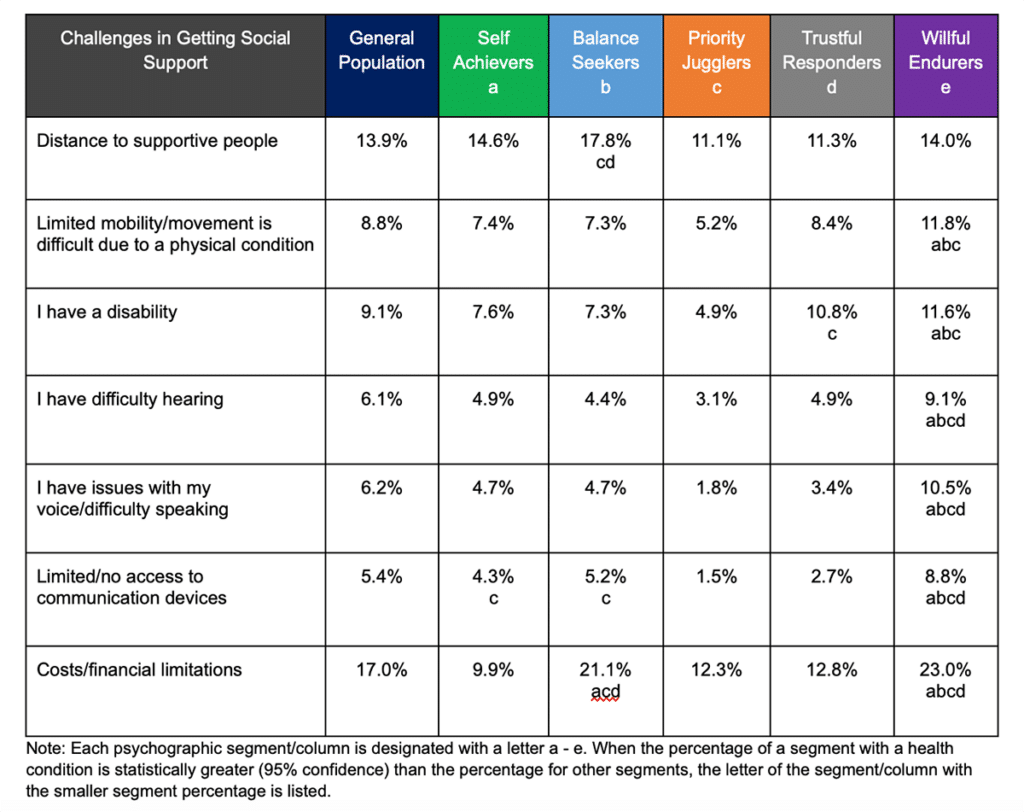
This segment represents the largest portion of healthcare consumers at 37% of the population and this segment has actually grown over the course of the pandemic. Considering the prominence of Willful Endurers, addressing these challenges could make a significant impact on gaps in care.
Simplify Care Experience
One of the most important aspects of addressing care gaps is simplifying the process of accessing care. When the average attention span is 8 seconds, few patients will be willing to tolerate a subpar app, a terribly designed website or a disjointed care experience.
Upfront market research asked respondents how likely they would choose a hospital if the provider could make accessing care easy for them. Seventy-eight percent of the general population said they would be extremely/very likely to choose that hospital, with Self Achievers and Balance Seekers statistically more likely to hold this view.
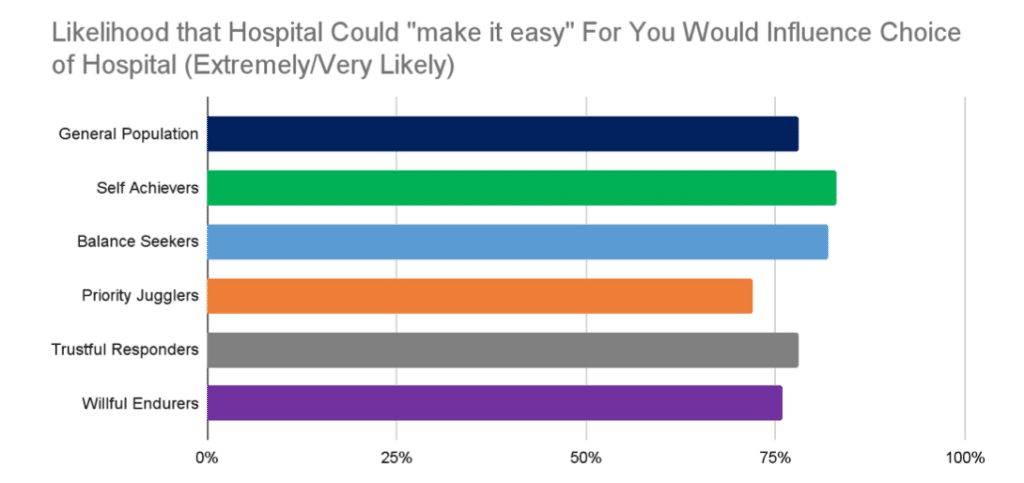
When it comes to integrating offerings under one health system, 79 percent of patients say that this aspect of care is extremely/very important. This is popular among all patients, but Self Achievers and Trustful Responders are statistically more likely than the others to feel this way.
At Upfront, our goal is to help patients get the care they need by making their experience easier through automation and personalization of the care experience. In the end, providers we work with achieve better care navigation and patient engagement, increase visits and improve health outcomes. Learn more about how psychographic segmentation plays a big role in changing patient behavior to achieve these goals in our whitepaper.


